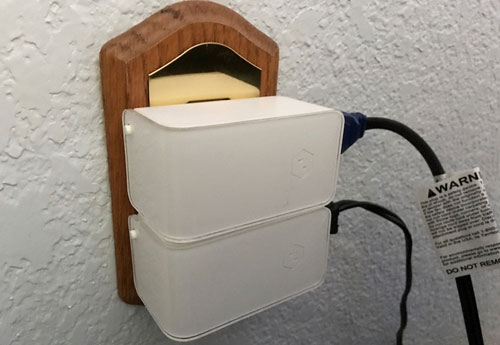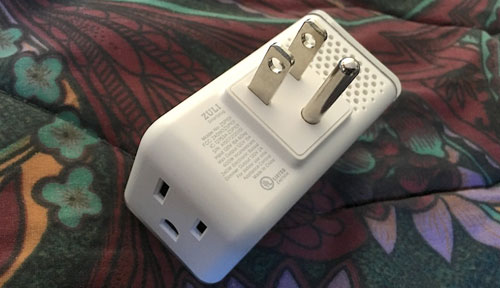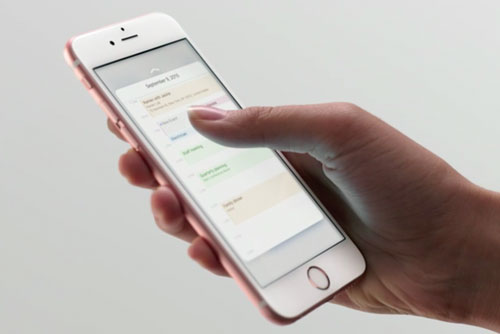Love MacBook Pros but loathe Apple’s rather astronomical retail prices? Today’s your lucky day. Head over to B&H Photo and you’ll find that the retailer is slashing hundreds of dollars off the prices of various models of the 2017 MacBook Pro. In the most extreme case, you can knock off as much as $900.
As you might expect, the price drops aren’t quite so extreme for the entry-level models, but they’re still impressive. Consider these two 13-inch MacBook Pros, which you can pick up for $200 off the listed price.
- 13-inch 2.3GHz/16GB/256GB: $1,649 (down from $1,849)
- 13-inch 3.1GHz/16GB/256GB: $1,799 (down from $1,999)
Want a bigger screen and more power? You’ll be happy to know you can also pick up some comparatively affordable MacBook Pros for impressive discounts. Here are a couple of our favorites.
- 15-inch 2.8GHz/16GB/256GB: $1,899 (down from $2,499)
- 15-inch 2.9GHz/16TB/512GB: $2,149 (down from $2,799)
The biggest price drops, though, affect the models with 1TB or more or storage. That’s a lot of room, and frankly I don’t think many of us need it. But $600 to $900 off is a great deal if you do a lot of work in video, play a lot of games, or simply use your MacBook Pro for everything.
- 13-inch 3.5GHz/16GB/1TB: $2,299 (down from $2,899)
- 15-inch 3.1GHz/16GB/2TB: $3,299 (down from $4,199)
Source: www.macworld.com
How Apple could fix the Mac App Store
December 3rd, 2015 | Edited by Zoran Stosic | software
Dec
03
A few simple changes—and one major change—could improve the Mac App Store experience for both developers and customers.
Because I recently discussed the tradeoffs involved in selling apps only on the Mac App Store, some are convinced I hate the entire concept of the App Store. That’s not the case, though—I just think the current implementation is flawed and leads to bad experiences for both developers and sellers.
However, with a few simple changes—and one not-so-simple changes—the Mac App Store really could be the place to shop for Mac software, instead of a place where you only find apps that meet Apple’s narrow definition of what an app should be.
The simple changes
The following changes should be relatively easy for Apple to implement, as none involves fundamentally altering the store’s operations. They are, in fact, mostly policy changes as opposed to complex technical changes.
Allow demos
There are no technical reasons Apple couldn’t offer demos. They could issue a license that expires in a given number of days or after a given number of uses. As a user, I know I like to try apps before I buy. As a developer, I want users to try my apps before they buy so they know they’re getting what they want.
Allow refunds
While you can’t get refunds on software you purchase at retail stores, Mac developers have long offered refunds on downloadable software. Panic, BareBones, Smile, and yes, even us at Many Tricks (and probably hundreds more) all have generous refund policies. I can’t speak for the others, but we see less than a 1 percent refund rate, which is an acceptable trade-off for a customer-friendly policy. So why can’t Apple officially offer refunds, too?
Allow paid upgrades
For many independent developers, reduced-cost (but still paid) major-version upgrades are a key revenue source. They’re also a benefit for existing customers, as they save money compared to the full cost of the new app.
For apps we sell in the App Store, we have to either choose to release a major new release for free, or set it up as a new app and list it at a discounted price to simulate upgrade pricing. But by doing this, everyone gets the low price, and prior customers aren’t rewarded for their original purchase.
Apple could easily let developers designate a release as a paid upgrade with its own price, available only to those who already own the app.
Treat the Mac App Store like an equal
If you compare the Mac App Store to the iTunes Store, the Mac App Store is clearly the ignored child. iTunes Store apps can use videos to demonstrate how they work. iTunes Store developers can use Apple’s TestFlight to beta test their apps. iTunes Store apps can implement app analytics to help with marketing and design decisions. The Mac App Store gets none of these tools. Speaking for Many Tricks, we’d use all of these tools if they were available
Allow interaction between developers and users
Pick any app at random on the Mac App Store, and you’ll find a few one-star reviews that have nothing to do with reviewing the software. Here’s one example, taken at random from a selection of many:
”I purchased this app and trying to burn disk with no success. It keeps crashing and it won’t load at all any more. I’ve gone through five discs with no luck.”
This “review” comes, of course, with a one-star rating. But the user isn’t reviewing the software, they’re asking for tech support help. But the app developers have no way to contact this user to solve their problem. The best they can do is leave another “review,” asking the user to get in touch with them. But it’s not a reply to the review, so there’s little chance the user will see it.
Apple could easily solve this problem by letting the registered developer of the app (you’d have to be logged in using the account associated with your app) send a response message to any posted review. Developers wouldn’t see the user’s address, of course, as it’d first be anonymized by Apple. Amazon, eBay, craigslist, and many other sites do something similar when buyers contact sellers; why can’t Apple?
Regardless of the “how,” something should be done: The current system is broken for both users trying to find actual reviews, and for developers trying to provide support.
The harder change
To really make the Mac App Store a vibrant and lively storefront for Mac apps, Apple should find a way to allow non-sandboxed apps, as well as other currently prohibited apps, into the store. “Danger!” you scream? Keep in mind that the Mac App Store was open for over a year without any sandboxing requirements, and the world didn’t end.
In fact, there are still non-sandboxed apps in the App Store today. Of our own Many Tricks’ products in the App Store, only Name Mangler is actually sandboxed. These non-sandboxed apps exist because Apple allowed them to remain (but not gain new features) in the store if they were there when the sandbox rule went into effect (March of 2012). For over three years, then, thousands of people have been buying and installing non-sandboxed apps, to absolutely no ill effect.
I’m not suggesting that Apple removes the sandbox. Rather, there should be some way for shoppers to browse non-sandboxed apps. Why? Because by removing the sandbox restriction, Apple can showcase an entire range of useful applications that users are not seeing today. Programs that rely on inter-application communication, for example. Programs could do more, too, if they were allowed to implement features that weren’t sandboxable.
Beyond the sandbox, Apple needs to let more complex apps into the store. Microsoft Office; virtualization apps like VMware Fusion and Parallels Desktop; Adobe’s entire product suite; backup apps like Carbon Copy Cloner and Backblaze; alternative browsers such as Firefox and Google Chrome; text expansion utilities like Typinator, TextExpander, and TypeIt4Me. I could go on, but Dan Counsell of RealMac Software has put together a great list (which is still just the tip of the iceberg).
By keeping these apps out of the App Store, Apple is presenting a limited view of just what the Mac can do. And as the Mac App Store is installed on every new Mac, many users probably don’t know any better and think that what they see is what they can get. That’s not good for users, not good for developers, and in the long run, not good for Apple.But what about the danger, you ask? Every developer in the App Store has to be registered with Apple. They can easily include kill switch functionality that would disable any rogue apps that get through the review process. And yes, every app in the store would still have to go through the review process, and meet Apple’s non-technical requirements for functionality, features, appearance, etc. But the sandbox wouldn’t have to apply, and apps that require extensions or System Preferences panels to run would be welcomed, assuming they passed the rest of the review.
Is this an easy thing for Apple to do? I don’t think so; the implementation details are complex (how would users access these “outside the box” apps? Do they show up in search results?). However, for the good of the platform and the App Store itself, I think it’s critical that the store offer a much broader selection of apps.
The final word
I honestly don’t expect Apple to address every item on this list. I’m not even sure if they’ll address any of them. But for the sake of the store, and its customers and developers, I hope they do implement many of them, at least: In the long run, a much better Mac App Store is better for everyone involved.
Source: www.macworld.com
You can buy Apple’s iPad Pro, Apple Pencil, and Smart Keyboard on Nov. 11
November 10th, 2015 | Edited by Zoran Stosic | hardware
Nov
10
The 12.9-inch tablet and its accessories are available online first, then hit store shelves later this week.
Apple took the wraps off its long-rumored super-sized tablet, the 12.9-inch iPad Pro, back in September, but would only say its release would happen sometime in November. The company announced today that the Pro will go on sale this Wednesday online only, but will arrive in stores “later this week” (usually Apple code for Friday).
The Pro starts at $799 for a 32GB Wi-Fi model and goes all the way up to $1079 for a 128GB version with Wi-Fi and cellular connectivity. The tablet comes in silver, gold, and space gray. The tablet will be available in 40 countries at launch, including the U.S., U.K., Canada, China, France, Germany, Italy, Japan, Mexico, and Russia.
The $99 Apple Pencil, $169 Smart Keyboard, $79 silicone cases, and $59 Smart Covers also go on sale on Wednesday and will appear on store shelves on Friday, if you want to add a few accessories to turn the Pro into a creative multitasking machine.
“The early response to iPad Pro from app developers and our customers has been incredible, and we’re excited to get iPad Pro into the hands of customers around the world this week,” Apple marketing chief Phil Schiller said in a press statement on Monday.
Apple’s press announcement pointed to apps like Adobe’s Creative Cloud suite, including Photoshop Fix, FiftyThree’s Paper, Savage Interactive’s Procreate 3, and sketching tool UMake as examples of the kinds of creative apps that make perfect sense on the iPad Pro.
Why this matters: Apple is releasing the giant Pro as iPad sales are sliding andMicrosoft’s Surface lineup of workhorse tablets is seeing some success. Creatives have long clamored for multitasking features like the ones built into iOS 9, which was designed with the 12.9-inch Pro in mind. You can now run apps side-by-side on smaller iPads, like the iPad Air 2 and iPad mini 4, but those apps will have much more room on the Pro.
We went hands-on with the iPad Pro, Apple Pencil, and Smart Keyboard back in September, but stay tuned for our full reviews of the Pro and its accessories later this week. Are you buying an iPad Pro? Tell us why or why not in the comments.
Source: www.pcworld.com
Zuli Smartplug: A new presence in the home automation market
October 15th, 2015 | Edited by Zoran Stosic | hardware
Oct
15
In this Apple World review, we’re going to be taking a look at a new home automation product called the Zuli Smartplug. This product started out as a very successful Kickstarter campaign with over $175,000 in backing and is now available for sale at the Zuli website and at Lowe’s home improvement stores.
Zuli Smartplugs are available for $59.99 each or $159.99 for what is referred to as a “Presence Pack” of three. I’ll talk a bit more about Presence in a minute and what it means, but to start off with, the Smartplug is similar to those we’ve seen popping up for years. You plug it into a standard US outlet, pair it with an iOS app, and then you can turn it on and off with a tap or with rules that you set up.
Presence is the thing that sets Zuli Smartplugs apart from the rest. If a house has three or more Zuli Smartplugs, they can be used to discern whether or not you’re actually in a room. Your presence in a room can set off a device, so walking into a bedroom, for example, may turn on a lamp and a fan.
The iOS app is one of the best I’ve seen so far for a home automation product, and setup was the easiest and fastest I’ve run through. The Zuli app logically sets up places like home, office, vacation home, and so on, then rooms are defined in those places, and finally Smartplugs are defined in each room. There is a large choice of icons for the type of electrical product the Smartplug is connected to, and you can even make a suggestion for an icon. Rooms can be defined by color, helpful if you have rooms painted in different colors.
Once devices are attached, they can be monitored various ways. First is an energy pane that shows energy usage, estimated monthly cost, estimated active time, and the carbon footprint of the device. The next pane tells you whether or not presence detection is enabled, and it’s possible to set up rules for what happens when you walk into or out of a room. Rooms are calibrated through a simple process, and can be recalibrated at any time. Next, there’s a scheduling screen for setting up schedules. Once again, the Zuli team has done a bang-up job of making the schedule setup process easy and fast. Finally, settings let you name an electrical device, assign an icon to it, define the type of device it is, and see info about the Zuli Smartplug that’s being used.
I recently had a chance to talk with Taylor Umphreys, the founder and CEO of Zuli, about the Smartplug and what he sees on the horizon for the device. The company has a working relationship with the folks at Nest, adding home and away accuracy to the smart thermostat by adding the Presence capability. Presence can tell the Nest Thermostat that someone is in the house, even if they don’t walk by the thermostat. According to Umphreys, you’ll eventually be able to identify individuals in the home and adjust the thermostat accordingly.
The cooperation with Nest also has a side benefit. Someone who has the Zuli app and decides to purchase a Nest Thermostat will find that they can actually set up the thermostat without using the Nest app. Nest and Zuli have worked together on an interactive end cap display in Lowe’s stores showing how the two devices work together. The company is negotiating other partnerships in the home automation space.
I also asked Umphreys about Presence and how it works. It uses Bluetooth and a special algorithm developed by the company to triangulate the location of a user in relation to the switches. The device uses machine learning algorithms to constantly improve the accuracy of locating users, something I noticed during a month of testing.
At this time, Zuli Smartplugs are not compatible with HomeKit, so don’t plan on using Siri to turn your lights appliancesson or off. Umphreys did say that the company is working on it for an integration in the future; the initial Kickstarter project was run about the time that the HomeKit standard was being developed, so it was impossible to work it into the design.
Being an Apple Watch owner, I was also wondering if Zuli will add a Watch companion app. Umphreys mentioned that it’s on his development team’s radar, but there is no set timeline for a Watch app yet.
Conclusion
Based on the experiences I had setting up the Zuli Smartplugs, using the app, and watching how the devices became more accurate in knowing when I was entering or leaving a room, I was very impressed with the way it works. The Nest Thermostat integration is a huge plus, and the product itself is smartly designed. The only thing keeping me from giving the product a full five-star rating at this time is the lack of HomeKit support.
What 3D Touch could mean for accessibility
September 19th, 2015 | Edited by Zoran Stosic | hardware
Sep
19
When it’s hard to tell a button from a link, the iPhone 6s and its 3D Touch feature could put more power into the hands of the visually and motor impaired.
In March, I wrote a piece for MacStories on the accessibility merit of Force Touch. I said, in part:
Imagine, for example, iOS 10 or 11. Apple will almost assuredly bring Force Touch to the iPhone and iPad, and they could utilize the technology in a slew of ways. They could effectively solve the problem with buttons in iOS 7 and 8 by using haptic feedback to denote a “button press” everywhere in the system. Thus, visually impaired users like me wouldn’t have to struggle so much in figuring out what’s a button versus a text label. Likewise, Force Touch could save those with motor challenges from the work of extra taps by allowing force-pressing to bring up contextually specific controls. There are lots of possibilities here.
My assumption that it would take two or three years for Apple to bring Force Touch to an iOS device was silly in hindsight. That’s because Apple is bringing Force Touch—namely, “3D Touch”—to the new iPhone 6S and 6S Plus, announced last Wednesday.
Apple is calling 3D Touch the “next generation of Multi-Touch,” with Peek and Pop and Quick Actions. My first impression is that the new technologies look pretty cool. From an accessibility perspective, there are some obvious benefits that jump out at me, but so too are there potential downsides.
The good: Less visual scanning and fine motor issues
Force Touch is useful simply as a time- and energy-saver. In visual terms, scanning a user interface can be daunting because it can be hard to find a certain button or icon. This is especially true in apps with busy or cluttered UIs [like Apple Music](http://www.macworld.com/article/2953973/ios-apps/apple-music-in-ios-9-gets-a-much-needed-redesign.html). Too much scanning is problematic in another way: it causes frustration, as well as eye strain and fatigue. Similarly, some users with fine-motor delays may feel frustration and/or even literal pain by having to tap a bunch of buttons to, say, send an iMessage or email.
Enter 3D Touch’s Quick Actions. What this feature allows is quick scanning and fewer taps. For example, instead of having to launch the Phone app, find the right tab, find a name, and tap it, someone like me can just hard-press the Phone icon on the Home screen, and tap a person’s name to call them instantly. It seems trivial, but the few seconds that are shaved off by Quick Actions really does have the potential to make a significant difference for the motor impaired. It makes a laborious task much more accessible.
As for Peek and Pop—which lets you preview things like emails and location maps by hard-pressing them, then hard-pressing again to open them fully—it seems like more of a convenience than anything else. I’m having trouble figuring out what its accessibility benefit would be. That isn’t to say that there aren’t anyaccessibility wins here—I’ll just have to try it in person to see.
The bad: Complexity and visual/motor issues
First, complexity. It’s not hard to imagine someone who’s cognitively delayed or has a learning disability being confused by 3D Touch’s layers and functions. Forgetting or misremembering what each touch does and how to get to them can lead to a less-than-enjoyable experience. It’s a bit of a tightrope walk, though: you want people to use 3D Touch, but the pragmatic approach would be to keep the UI mechanics as simple as possible by eschewing 3D Touch altogether. Simple may be best in these cases, but then you miss out on a marquee feature. It’s not an easy choice.
From a visual and motor standpoint, I have questions about Quick Actions and Peek and Pop. Will Quick Actions’s menus respond to Accessibility features such as Large Dynamic Type and VoiceOver? The same goes for Peek and Pop. My gut tells me that Apple’s considered these things and has added Accessibility support, but I can’t be 100 percent sure until I get my hands on an iPhone 6s.
Motor-wise, I can see 3D Touch being troublesome for those with RSI or other muscle-affecting conditions. Pressing the iPhone’s screen with different levels of pressure may prove to be painful. Also, some with low muscle tone may not be able to press firmly enough to register an action. (As an aside, I’m curious to know if Switch Control in iOS 9 supports 3D Touch. It’ll be a big deal if it does.)
Seeing is believing
If it seems like I’m writing mostly conjecture, that’s because I can’t definitely speak to 3D Touch’s utility as an accessibility tool—after all, the new iPhones aren’t out yet. The true test, of course, will come when I can play with one.
Still, as a person with both low vision and motor delays, I’m bullish overall about 3D Touch’s usefulness to me. If anything, I think it’ll make me more efficient, but that efficiency will only be as high as 3D Touch is accessible.
Source: www.macworld.com



